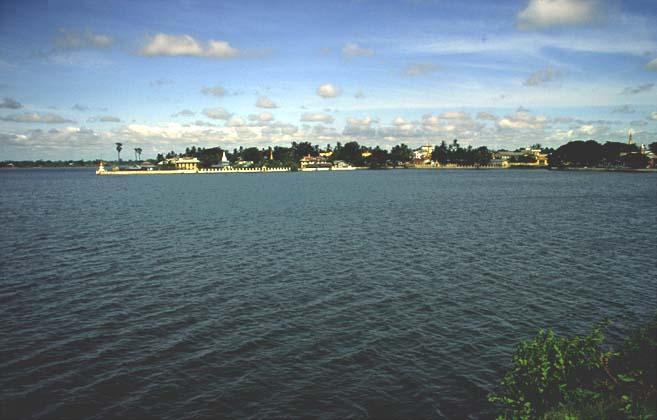1. TCP/IP Layers Model
2. Encapsulation and De-encapsulation
3. Legacy IP classes
1. TCP/IP Layers ModelTCP/IP protocol suite is the result of academic research started in 1970s funded by Department of Defense.
(For those interested in history of Interet should read
Where wizards stay up late book.)
TCP/IP use 4 layers model as opposed to ISO 7 layers model.
Studying sniffer traces in Wireshark can help understanding TCP/IP layering model.
TCP/IP 4 layers, in order of bottom to top, are
a. Network Interface Layer
b. Internetwork Layer
c. Transport Layer (aka Host-to-Host Layer)
d. Application Layer
Followings are a few examples of avaiable technology/protocol in today (2007) computer networks.
a. Network Interface Layer - Ethernet, T1, DS3, ISDN
b. Internetwork Layer - IP
c. Transport Layer - TCP, UDP
d. Application Layer - HTTP, SSH, Telnet, DNS
 2. Encapsulation and De-encapsulation
2. Encapsulation and De-encapsulationWhen Host A sends data to Host B via a TCP/IP network, sender (Host A) encapsulates data with required information from lower layer protocol. Receiver (Host B) de-encapsulates by removing lower layer protocol overhead until it can retrieves data sent from Host A.
For a HTTP traffic, following occurs at Host A before it is sent to the network in that order.
a. HTTP layer encapsulation
b. TCP layer encapsulation
c. IP layer encapsulation
d. Ethernet layer encapsulation
Once Host B receive data, following happens.
a. Ethernet layer de-encapsulation
b. IP layer encapsulation
c. TCP layer encapsulation
d. HTTP layer encapsulation
- and Host B receives data sent from Host A.
 3. Legacy IP classes
3. Legacy IP classesIP address were divided into 3 classes.
Class A was meant for large schools and companies, those who need up to
16 milliion IP addresses.
Class B was meant for medium schools and companies, those who need up to
65,534 IP addresses.
Class C was meant for small schools and companies, those who need less than
255 IP addresses.
Soon, designer of IP classes realize that the size of companies or schools do not neatly fit into just 3 categorizes and that it is ineffecient and wasteful.
For example, a Class B must be assigned a school that needs 4,000 IP address, wasting almost 60,000 IP addresses.
Idea of classful addressing is no longer valid these days. But the term Class A, B and C are still used in the industry and it is required to understand and memorize those classes and their addressing system.
Class of an IP address can be recognized by looking at the first byte (aka first octect). Following is the relation of first octect of IP address to IP class.
1 - 126, Class A
128 - 191, Class B
192 - 223, Class C
* Classes are based on location of 1st zero in binary value of first octect (which is easier for computer but not so for human beings).









